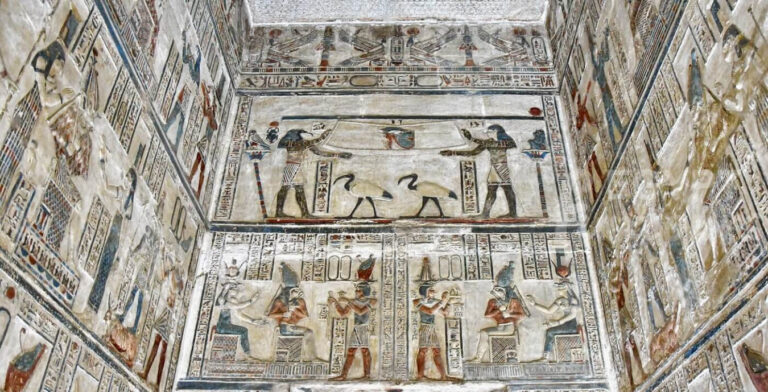The Unfinished Obelisk
The Unfinished Obelisk in Aswan, Egypt, stands as a remarkable testament to the engineering prowess and ambitious spirit of ancient Egyptian civilization. This colossal monument, had it been completed, would have been the largest obelisk ever erected. Today, it offers invaluable insights into the techniques and challenges faced by ancient builders.
Historical Background
The Unfinished Obelisk dates back to the reign of Queen Hatshepsut (1508–1458 BCE) during the New Kingdom period of ancient Egypt. It was commissioned by Hatshepsut, one of Egypt’s most renowned pharaohs, to complement other monumental obelisks she had ordered, reflecting the grand architectural projects of her era.

Dimensions and Significance
Had builders completed it, the Unfinished Obelisk would have measured approximately 42 meters (137 feet) tall. It would also have weighed around 1,200 tons. This would have made it the tallest and heaviest obelisk ever constructed. The obelisk honored the sun god Ra. Builders likely planned its placement in the Karnak temple complex.
Construction Techniques
Workers carved the obelisk directly out of the bedrock. They worked in a red granite quarry in Aswan. This region is known for its high-quality stone. Egyptians used this stone in many iconic monuments. The ancient Egyptians employed pounding stones and chisels. These tools were made from harder materials like dolerite. They used them to carve the obelisk. Workers carved channels around the obelisk. This separated it from the bedrock. This showcases their advanced knowledge of stone cutting.
Abandonment and Discovery

The project was abandoned when a significant crack appeared in the granite. This rendered the obelisk unusable for its intended purpose. This crack remains visible today. It serves as a poignant reminder of challenges ancient builders faced. European explorers brought the Unfinished Obelisk to modern attention in the 19th century. Since then, it has become a focal point for archaeological study.
Insights and Legacy
The Unfinished Obelisk provides valuable insights into ancient Egypt’s quarrying methods. It also reveals their construction techniques. Marks from workers’ tools are still clearly visible. Ochre-colored lines mark their work areas. These offer a unique glimpse into the stoneworking techniques of the time. The site further highlights the ambitious nature of ancient Egyptian projects. It also shows their mastery of engineering.
Modern Significance
Today, the Unfinished Obelisk is a popular tourist destination in Aswan. It attracts visitors globally. They eager to learn about ancient Egyptian history and engineering. Efforts preserve the site. They also protect it from further damage. This ensures future generations can continue to appreciate this historical artifact.
The Unfinished Obelisk in Aswan stands as a symbol. It represents the incredible engineering abilities and ambitious spirit of the ancient Egyptians. Despite its incomplete state, it offers a wealth of knowledge about ancient construction techniques. It also highlights the challenges builders of the time faced. For anyone interested in ancient history and culture, a visit to the Unfinished Obelisk is a must. It provides a unique and fascinating glimpse into the past.

























